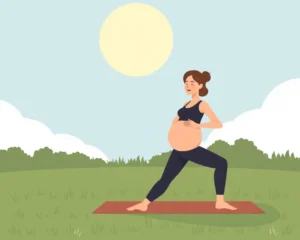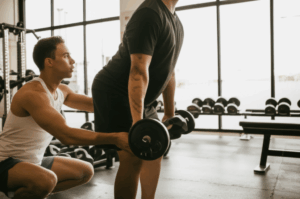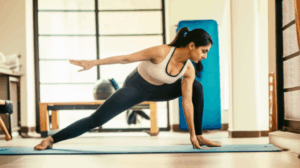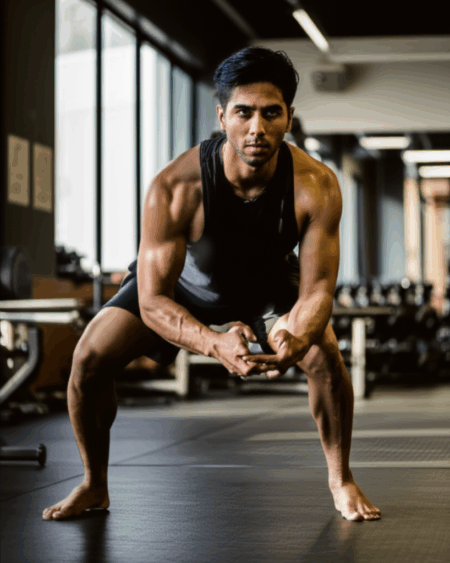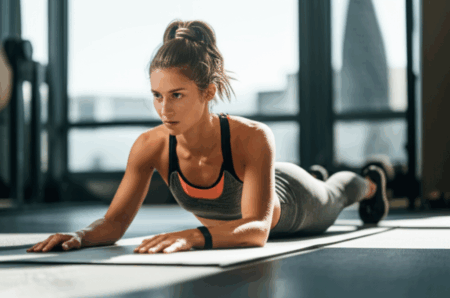Summer is here, and it’s time to revamp your fitness routine to match the season’s energy and demands. With warmer weather and longer days, it’s the perfect opportunity to get active and achieve your fitness goals. To make the most of your summer workouts, incorporating interval training and full-body exercises into your daily routine can be highly effective. These strategies not only help you burn calories and build muscle but also keep your workouts engaging and efficient.
Beat the Heat: Smart Summer Fitness Strategies
Exercising in the summer heat presents unique challenges. High temperatures and humidity can make workouts feel more strenuous, increasing the risk of overheating and dehydration. To stay safe and comfortable, it’s crucial to adjust your approach to fitness during the summer months. Here are some essential tips to keep in mind:
- Time it Right: Avoid exercising outdoors during the hottest part of the day, typically between 10 a.m. and 4 p.m.. Opt for early morning or late evening workouts when temperatures are cooler.
- Hydrate: Drink plenty of water before, during, and after your workout. Dehydration can significantly impact your performance and health. Carry a water bottle and sip regularly, even if you don’t feel thirsty. Consider hydrating with natural juices like coconut water or watermelon juice for added electrolytes.
- Dress Smart: Wear lightweight, light-colored, and loose-fitting clothing. Breathable fabrics like cotton can help keep you cool by wicking away sweat.
- Sun Protection: Protect your skin from the sun by wearing sunscreen, sunglasses, and a hat or visor. Apply sunscreen at least 20-30 minutes before heading outside and reapply every two hours, especially if you’re sweating.
- Listen to Your Body: Take frequent breaks in the shade and pay attention to how you feel. If you experience dizziness, nausea, or excessive fatigue, stop exercising and cool down immediately. Allow yourself time to adapt to the heat, as it can take 4-14 days to acclimate.
- Indoor Alternatives: On extremely hot or humid days, consider indoor workouts. Gyms, swimming pools, and air-conditioned fitness facilities offer a comfortable environment for staying active.
Interval Training: Your Fast Track to Fitness
Interval training, particularly High-Intensity Interval Training (HIIT), is a fantastic way to maximize your workout efficiency and burn calories. HIIT involves short bursts of intense exercise followed by brief recovery periods. This method elevates your metabolism, helping you burn calories even after your workout is complete.
Benefits of Interval Training
- Calorie Burning: HIIT workouts are highly effective at burning calories in a short amount of time. The intense bursts of activity require a significant energy expenditure, leading to greater calorie burn compared to steady-state cardio.
- Improved Cardiovascular Fitness: Interval training challenges your cardiovascular system, improving your endurance and overall fitness level. The alternating periods of high and low intensity help your heart become more efficient at pumping blood.
- Muscle Building: While HIIT is primarily a cardio-focused workout, it can also contribute to muscle building, especially when combined with bodyweight exercises or resistance training.
- Time Efficiency: HIIT workouts are typically shorter than traditional cardio sessions, making them ideal for busy schedules. You can achieve significant results in as little as 20-30 minutes.
- Versatility: HIIT can be adapted to various exercises and fitness levels. Whether you prefer running, cycling, or bodyweight exercises, you can incorporate interval training into your routine.
Sample Interval Training Exercises
- Sprints: Alternate between sprinting and jogging or walking. For example, sprint for 30 seconds and then jog for 60 seconds.
- Burpees: This full-body exercise combines a squat, push-up, and jump. Perform burpees for 30-45 seconds followed by a short rest.
- Jumping Jacks: A classic cardio exercise that can be easily incorporated into a HIIT routine. Do jumping jacks for 60 seconds with a rest period afterward.
- Mountain Climbers: Start in a plank position and alternate bringing your knees towards your chest. This exercise works your core and cardiovascular system.
- Jump Squats: Combine a traditional squat with an explosive jump. This exercise targets your lower body and improves your endurance.
Designing Your HIIT Workout
- Warm-up: Begin with 5-10 minutes of light cardio, such as jogging or jumping jacks, to prepare your muscles for the workout.
- Work Intervals: Perform each exercise for a set amount of time (e.g., 30-60 seconds) at high intensity.
- Rest Intervals: Follow each work interval with a recovery period (e.g., 15-30 seconds) of low-intensity activity or complete rest.
- Repeat: Repeat the work and rest intervals for 15-30 minutes.
- Cool-down: Finish with 5-10 minutes of stretching to help your muscles recover and prevent soreness.
Full-Body Workouts: Maximize Your Time and Effort
Full-body workouts are another excellent strategy for summer fitness, as they target multiple muscle groups in a single session. This approach is time-efficient and effective for building strength, burning calories, and improving overall fitness.
Benefits of Full-Body Workouts
- Efficiency: Full-body workouts save time by working multiple muscle groups simultaneously. This is ideal for those with busy schedules who want to get the most out of their workouts.
- Increased Calorie Burn: Engaging multiple muscle groups in each exercise leads to a higher calorie burn. This can help you lose weight and achieve a leaner physique.
- Improved Strength and Endurance: Full-body workouts build both strength and endurance by challenging your muscles in a variety of ways.
- Enhanced Functional Fitness: Many full-body exercises mimic real-life movements, improving your functional fitness and making everyday activities easier.
- Balanced Muscle Development: By working all major muscle groups, full-body workouts promote balanced muscle development and reduce the risk of imbalances.
Sample Full-Body Exercises
- Squats: A fundamental exercise that targets your legs, glutes, and core. Perform variations like dumbbell squats or squat presses to add intensity.
- Push-ups: A classic exercise that works your chest, shoulders, triceps, and core. Modify the exercise by performing push-ups on your knees if needed.
- Lunges: Target your legs and glutes while also engaging your core. Try walking lunges or stationary lunges with dumbbells for added resistance.
- Rows: Use dumbbells or resistance bands to perform rows, which work your back, biceps, and shoulders. Kettlebell gorilla rows are also a good option.
- Plank: An excellent core exercise that improves stability and posture. Hold a plank for 30-60 seconds.
Designing Your Full-Body Workout
- Warm-up: Begin with 5-10 minutes of light cardio and dynamic stretching.
- Choose Exercises: Select 4-6 full-body exercises that target all major muscle groups.
- Perform Sets and Reps: Do 2-3 sets of 10-12 repetitions for each exercise.
- Rest: Allow for 60-90 seconds of rest between sets.
- Cool-down: Finish with 5-10 minutes of static stretching.
Combining Interval Training and Full-Body Workouts
For optimal summer fitness, consider combining interval training and full-body exercises into your routine. You can alternate between HIIT workouts and full-body strength training sessions throughout the week. This approach provides a well-rounded fitness program that targets both cardiovascular health and muscle strength.
Sample Weekly Schedule
- Monday: Full-Body Strength Training
- Tuesday: HIIT Workout
- Wednesday: Rest or Active Recovery (e.g., yoga, walking, swimming)
- Thursday: Full-Body Strength Training
- Friday: HIIT Workout
- Saturday: Active Recovery
- Sunday: Rest
Listen to the Experts
If you’re new to exercise or have specific health concerns, consulting with a fitness professional or healthcare provider is always a good idea. They can help you design a safe and effective workout plan that meets your individual needs and goals.
Fueling Your Summer Workouts
Proper nutrition is essential for supporting your summer fitness efforts. Focus on eating a balanced diet that includes plenty of fruits, vegetables, lean protein, and whole grains. Avoid processed foods, sugary drinks, and excessive amounts of unhealthy fats.
Pre- and Post-Workout Snacks
- Pre-Workout: Choose a light snack that provides energy without weighing you down. Options include a piece of fruit, a small handful of nuts, or a smoothie.
- Post-Workout: Replenish your energy stores and aid muscle recovery with a snack that contains both protein and carbohydrates. Good choices include a protein shake, Greek yogurt with fruit, or a turkey sandwich on whole-wheat bread.
Stay Consistent and Enjoy the Process
Consistency is key to achieving your summer fitness goals. Create a weekly schedule and stick to it as much as possible. Find activities that you enjoy and that fit into your lifestyle. Enlist a workout partner to stay motivated and accountable. Remember to focus on the positive aspects of exercise, such as increased energy levels, improved mood, and a stronger, healthier body.
By following these tips and incorporating interval training and full-body workouts into your daily routine, you can make the most of your summer and achieve your fitness goals. Stay safe, stay hydrated, and enjoy the process of becoming a healthier, fitter you!

